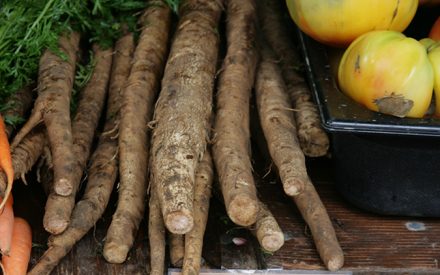Transcript
Hello and thank you for joining me for this rural entrepreneurship video series. I’m Katie Wantoch, Farm Management Outreach Specialist with the UW-Madison Division of Extension. In this video, I’ll be talking about income tax considerations for your food and farm business. Please note this information changes often. This material is general education. It is not intended to take the place of professional advice from an attorney, accountant or tax professional. Information in this video is based on material from the Land Grant University Tax Education Foundation and the Internal Revenue Service, or IRS. For a list of universities involved, other factsheets and additional information related to agricultural income tax, please visit Ruraltax.org or irs.gov.
Any farmer, agricultural producer or small business must file a federal tax return and pay federal income and or self-employment taxes. The type of business entity structure such as sole proprietorship, partnership, corporation, cooperative and nonprofit also determines the tax that will be paid.
As an owner, it is important for you to have at least a basic understanding on how federal income taxes affect your business. When filing an income tax return, it is important to determine if your operation is a business or a hobby. Unfortunately, the Internal Revenue Service or IRS does not provide a clear definition. In some instances, it may be obvious you are engaging in an activity for sport or recreation, which would be defined as a hobby. In general, the IRS considers an activity a trade or business and not a hobby if it is conducted with a profit motive.
Profit is defined as income or receipts greater than expenses, where expenses include depreciation of capital assets. Note that this determination does not require that a profit is generated only, that there is motive for making a profit in conducting the activity. An article talking about farm losses versus hobby losses is available on the ruraltax.org website.
For tax purposes generally, all individuals, partnerships or corporations that cultivate, operate or manage farms for a gain or profit, either as owners or tenants are farmers. Farming activity includes livestock, dairy, poultry, fish, fruit, and truck farms. It also includes plantations, ranches, ranges, orchards, and groves.
An income tax imposes a tax on the taxpayer’s income. The federal government, most state governments and some local governments collect income taxes. Many state and local income taxes are based on the federal income tax rules, with varying adjustments. The 16th Amendment to the United States Constitution gives Congress the power to collect taxes on income. Congress use that power by defining gross income as all income from whatever source derived. Because of that broad definition, an increase in wealth is included in taxable income unless it is specifically excluded.
For example, Congress excludes an increase in the value of property from gross income until there is a taxable event such as the sale of that property. Individual farmers need to file IRS Form 1040, known as the U.S. individual Income tax return. The income section on page one of the Form 1040 has separate lines to report several categories of income, such as wages and salaries earned; interest, dividends, refunds; distributions from retirement plans; unemployment compensation; and Social Security benefits.
For other income sources, a specific form or schedule, which may include both revenue and expenses, will need to be filed with the Form 1040. An individual’s net income from operating a business is reported on the form Schedule C for profit or loss from business. The Schedule F profit or loss from farming is used to calculate the net income from a farming business. Form 4562 for depreciation and amortization lists detailed information about depreciated and amortized assets. And form 4797 Sales of business property is used to report the sale and exchange of property.
Let’s discuss a few of these forms and schedules in more detail. Farmers report income and expenses from their farming business using the schedule F. This schedule is only for farmers who have their business as a sole proprietorship and not a partnership, limited liability company or LLC, or corporation. If you are the sole member of an LLC engaged in the business of farming, you may use a Schedule F.
Farmers may receive income from many sources, such as the sale of produce raised, government payments and other services provided. The most common source of income is from the sale of produce, grains, livestock and other products raised or bought for resale. Buyers should report the full amount of income received, including any form of payment that may be used.
Cash transactions are standard in farming, but this is a source of income and should be claimed on schedule F. Bartering is another income source for farmers. Bartering occurs when trading farm products or property or someone else’s labor or personal items for another farm’s products or property. For example, a farmer is at the farmer’s market to sell their honey. They want to eat lunch, so they barter with a bread maker in exchange for a loaf of bread for a jar of honey.
The IRS says trading a product or service for another is taxable bartering. In this example, the products are being sold by both parties, so the IRS would like the farmers to report the fair market value of their products. If the amount of the transaction exceeds $600. This reporting would be done on form 1099 miscellaneous.
The ordinary and necessary costs of operating a farm are business expenses that can be deducted from the income received. These expenses include ordinary costs, farm labor and depreciation. Some expenses paid during the tax year may be for personal use, while others might be for business. Examples of these expenses include gasoline, oil, fuel, water, rent, electricity, telephone, auto upkeep, repairs, insurance, interest and taxes. Farmers must split these expenses between their business and personal.
Generally, the business part of these expenses is not deductible as a business expense on the schedule F. For example, a farmer paid $1500 for electricity. They use two thirds for personal, and the other one third was used for the farm business. Only one third of the expense or $500 would be deductible as a farm expense on the schedule F. A farmer who pays another person, their child or another dependent family member to do farm work may need to withhold Social Security and Medicare taxes, as well as issue a W-2 at year end.
Employees that work set hours have a true employer employee relationship are provided reasonable wages or other compensation. These labor expenses will be deductible as a farm expense and claimed on the schedule F. The wages are then included in the family member’s income and that person will have to file their own income tax return.
If a person sets their own hours to work and are paid by the job, then they might be an independent contractor and would be given a form 1099 miscellaneous. If a farmer engages in a business activity that is not farming, the income and expenses for that activity are reported on schedule C.
Any processing of a commodity that was raised on the farm beyond the stage required to make it marketable as a commodity is a non farming business. For example, if you raise grapes and use them to make wine, juice or jelly, you should report the income and expenses from growing the grapes on schedule F and the income and expenses for making wine, juice or jelly on schedule C.
Another example is the sale of apples. The income and expenses from growing of apples would be reported on schedule F. If the farmer decides to process the apples into apple bread, cobbler or cider. The income and expenses from the sale of these processed items would be listed on Schedule C.
If a farmer completes work that may not be related to their farm, such as a side job, then income and expenses from this business would be reported on the schedule C. For example, Jorge operates a custom farming contract business. He and his employees provide fee based planting, cultivation and harvesting services to clients. These contracted services are necessary to raise crops and harvest them. Jorge’s business is not a farming business because he does not own the planted crops. Jorge’s business is a service business providing landowners the means to have their land cultivated without the need to own machinery and employ labor. Jorge should report his income and expenses on a schedule C.
Depreciation is an expense that requires its own form for income tax purposes. In general, a farmer or business owner cannot include in expenses the cost of purchasing assets that will be used over time. Instead, the cost of the asset is spread out over multiple years. A depreciation expense allows a portion of the cost to be deducted each year on the farmer’s schedule F or business owner’s schedule C.
Farmers can depreciate most types of tangible property such as buildings, machinery, equipment, vehicles, certain livestock and furniture that are used in their business. The big exception is land. Farmers cannot deduct depreciation for land. To be depreciable, the property must be property the farmer owns, be used in the farmer’s business, and has a useful life that extends substantially beyond the year placed in service as defined by the IRS.
Form 4562 is used to report the depreciation and amortization expenses associated with farm assets and includes detailed information about the assets cost, date placed in service, and method of depreciation used. See ruraltax.org for a list of depreciation topics in more detail.
Farmers should not report the proceeds from selling or exchanging assets used in the farming business on a schedule F. When business assets such as equipment are sold, any gain or loss from the sale has special tax treatment and should be reported on form 4797, sale of business property.
Assets used in the farming business may include breeding, dairy, and draft livestock; machinery; and real property such as land and improvements on the land, including buildings, fences, tile lines and grain bins. The gain or loss from each sale of assets is computed by subtracting the basis amount or the depreciation of the asset from its sale proceeds. Again, see ruraltax.org for more information.
If a farm business owner hires employees, they should withhold Social Security or FICA and Medicare taxes from their employee’s wages. Then they match the withheld amount and send the full amount to the IRS.
A farmer who is a sole owner or owner of a pass through entity are considered self-employed and are not allowed to pay themselves a tax deductible wage. As the owner, farmers are required to pay self-employment tax on their share of the farm’s net earnings of $400 or more. This is their contribution to Social Security and Medicare. This tax is calculated and reported on Form 1040 Schedule SE. Because this is paid on all farm business earnings. It can often be a larger expense than federal income taxes.
Farmers should work with a tax professional to develop a tax plan to calculate their self-employment tax liability and develop a strategy to potentially minimize this tax.
Farmers should keep accurate records of their farm sales and expenses, inventory and assets to make tax preparation easier and less expensive if they are hiring a tax preparer. Farm business owners should have a good understanding of what is and what is not farm income, categorize their expenses appropriately, keep detailed notes on any depreciable assets, and payroll records If they hire employees.
If you would like more resources, please visit our Extension Farm Management web site at farms.extension.wisc.edu to help you start your food or farm business.
Extension provides a variety of articles and videos on related topics such as collecting and organizing your farm records and selecting your accounting financial system. In addition, Extension has developed the Farm Pulse Financial Management and Analysis curriculum, which is a self-paced online course for farmers and others interested in learning how to use their farm financials to explore their farm business decisions. This course will help you evaluate your finances, take the pulse of your farm business, and set goals for the future of your operation. Learn more about the course at go.wisc.edu/farmpulse.
Feel free to reach out to the Farm Management Program with any questions by emailing farms@extension.wisc.edu.

 Organic Transition: Purpose, Process, and Resources
Organic Transition: Purpose, Process, and Resources Partnerships for Your Food or Farm Business
Partnerships for Your Food or Farm Business Finding the right people
Finding the right people Permits, licenses, and labels
Permits, licenses, and labels


